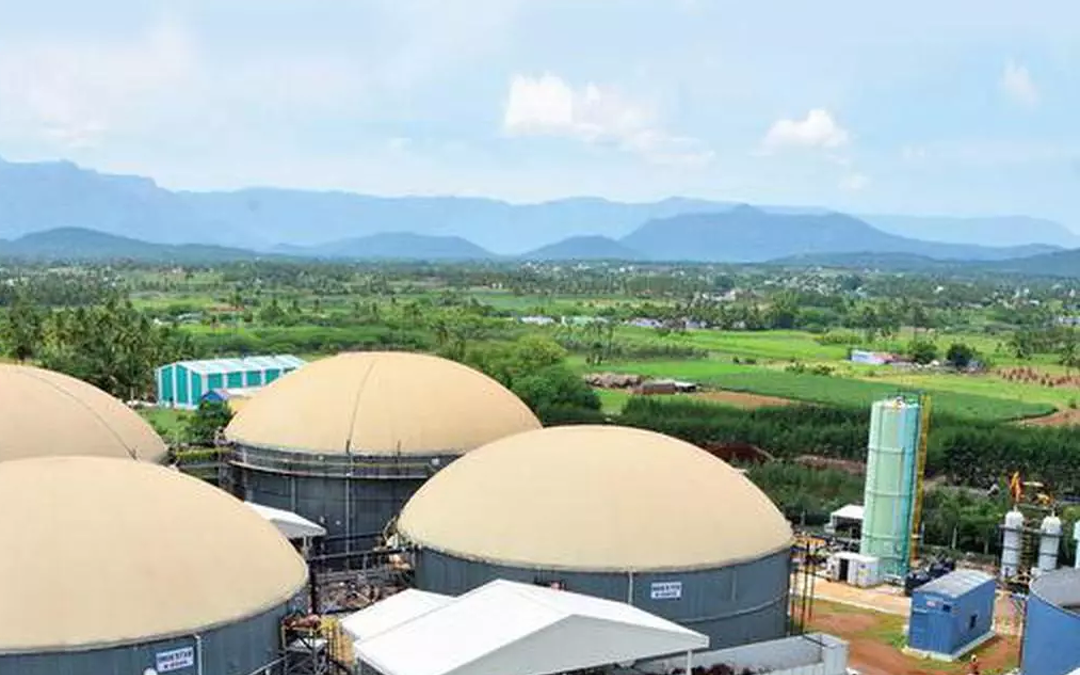India’s Bioenergy Ambitions Set to Transform Energy Landscape by 2030: IEA
India accelerates bioenergy growth to cut emissions, boost energy security and reduce fossil fuel reliance by 2030.
India is rapidly emerging as the world’s fastest-growing bioenergy market, with the sector projected to account for more than a third of global bioenergy demand growth between 2023 and 2030, according to the International Energy Agency.
The intergovernmental agency found that government-led initiatives aimed at increasing biofuel blending, enhancing biogas production, and expanding solid biomass are at the core of this strategy. These programs sought to reduce reliance on fossil fuel imports, improve air quality, and lower greenhouse gas emissions.
The agency said modern bioenergy currently accounts for 13 percent of India’s total final energy consumption, and demand is expected to rise by 45 percent by 2030.
“To meet India’s longer-term bioenergy ambitions, it will need to deploy new technologies and practices to collect and convert its vast feedstock potential into sustainable biofuels, biogases and solid bioenergy,” said Jeremy Moorhouse, energy analyst at IEA, in a commentary published on Wednesday.
Expanding Bioenergy Ambitions
India has set ambitious blending targets, including a 20 percent ethanol blend by 2025-26, a 5 percent biodiesel blend by 2030, and a 5 percent compressed biogas blending requirement by 2028-29.
Additionally, the government has mandated a 7 percent co-firing of solid biomass in coal power plants by 2026 and a 2 percent biojet fuel blend for international flights by 2028.
While these measures signify India’s commitment to renewable energy, IEAs note that achieving these goals will require substantial investments in infrastructure, innovation, and policy refinement.
The country has yet to unveil key implementation details, such as designing a certificate trading market for its CBG blending obligations, which could be crucial in incentivizing investment in bioenergy projects.
Harnessing Feedstock Potential
India currently consumes 180 million tonnes of feedstock annually for bioenergy production, which would need to increase by nearly 50 percent by 2030 to meet the growing demand.
Key sources include sugarcane, corn, agricultural residues and municipal waste.
However, unlocking the full potential of these resources requires improved collection systems and innovative processing technologies.
For instance, expanding used cooking oil collection could support biodiesel and sustainable aviation fuel production, while better waste management strategies, such as mixed-feedstock digestion, could boost biogas output.
Additionally, post-2030 bioenergy targets will likely hinge on the commercialization of advanced technologies capable of converting agricultural waste into biofuels. Due to high costs, this sector remains in its nascent stages.
Challenges and Policy Imperatives
While India’s bioenergy drive presents a significant opportunity to bolster energy security and sustainability, challenges remain.
IEA highlights four key action areas to address gaps in the sector: phasing out traditional bioenergy use, conducting a comprehensive feedstock assessment, formulating a national bioenergy strategy and implementing greenhouse gas performance-based standards.
Traditional bioenergy, which primarily includes burning firewood for household use, still accounts for nearly 40 percent of India’s total bioenergy consumption. Phasing out such practices would improve air quality and free up biomass resources for modern energy applications.
A unified feedstock assessment would help policymakers develop more accurate projections and avoid double counting agricultural residues in multiple bioenergy categories.
Furthermore, a national bioenergy strategy could complement existing programs, providing a roadmap beyond 2030 that balances energy security, air quality, cost efficiency, technological feasibility and environmental sustainability.
Additionally, adopting performance-based greenhouse gas reduction targets could ensure that biofuels deliver tangible emissions savings while minimizing unintended consequences on food and water security, biodiversity, and rural livelihoods.
Introducing a Robust Biogas Certification Framework
A critical component of India’s bioenergy expansion is scaling up compressed biogas production. To this end, the government is considering establishing a certification and tracking system to monitor production volumes and ensure compliance with blending mandates.
Similar frameworks have been implemented in Europe and the United States, offering models India could adapt to suit its needs.
For instance, the European Union’s Union Database for Biofuels, set to launch in 2025, aims to facilitate cross-border biofuel trading while ensuring sustainability compliance.
In contrast, the US employs a credit-based trading system under the Renewable Fuel Standard, allowing obligated parties to buy and sell compliance credits.
IEA suggests that India could benefit from implementing a National Registry to track CBG production and trade certificates alongside a book-and-claim system to facilitate transactions in markets with limited infrastructure.
Additionally, incorporating sustainability and carbon intensity requirements into mandates could prevent methane leakage and promote using environmentally beneficial feedstocks.
The Road Ahead
India’s bioenergy ambitions reflect a broader effort to position itself as a global leader in sustainable energy.
While the country has made notable progress — particularly in ethanol blending and biogas promotion — its long-term success will depend on a coordinated approach encompassing policy refinement, infrastructure development and technological innovation.
With nearly one billion tonnes of biomass waste available annually, India has a vast resource base to expand its bioenergy sector.
Also Read:
IIT BHU Develops Solar-Powered Microwave Reactor for Sustainable Waste Management

